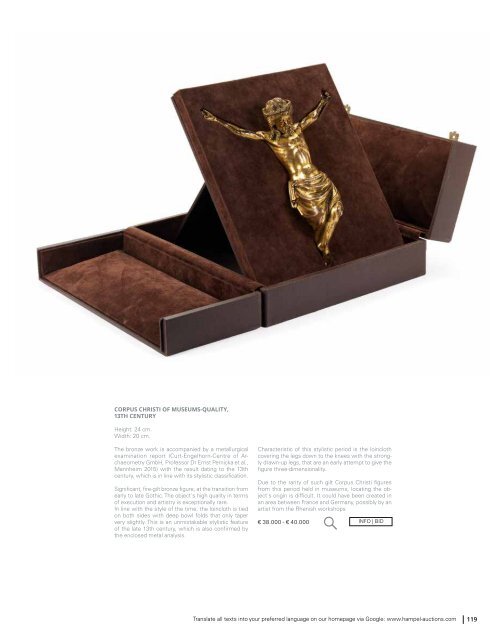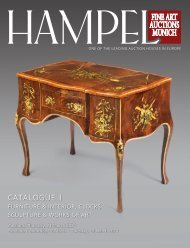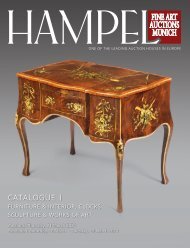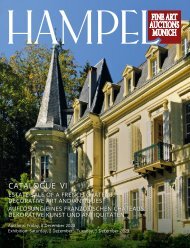Furniture & Interior, Clocks , Sculpture & Works of Art
You also want an ePaper? Increase the reach of your titles
YUMPU automatically turns print PDFs into web optimized ePapers that Google loves.
CORPUS CHRISTI OF MUSEUMS-QUALITY,<br />
13TH CENTURY<br />
Height: 24 cm.<br />
Width: 20 cm.<br />
The bronze work is accompanied by a metallurgical<br />
examination report (Curt-Engelhorn-Centre <strong>of</strong> Archaeometry<br />
GmbH, Pr<strong>of</strong>essor Dr Ernst Pernicka et al.,<br />
Mannheim 2015) with the result dating to the 13th<br />
century, which is in line with its stylistic classification.<br />
Significant, fire-gilt bronze figure, at the transition from<br />
early to late Gothic. The object´s high quality in terms<br />
<strong>of</strong> execution and artistry is exceptionally rare.<br />
In line with the style <strong>of</strong> the time, the loincloth is tied<br />
on both sides with deep bowl folds that only taper<br />
very slightly. This is an unmistakable stylistic feature<br />
<strong>of</strong> the late 13th century, which is also confirmed by<br />
the enclosed metal analysis.<br />
Characteristic <strong>of</strong> this stylistic period is the loincloth<br />
covering the legs down to the knees with the strongly<br />
drawn-up legs, that are an early attempt to give the<br />
figure three-dimensionality.<br />
Due to the rarity <strong>of</strong> such gilt Corpus Christi figures<br />
from this period held in museums, locating the object´s<br />
origin is difficult. It could have been created in<br />
an area between France and Germany, possibly by an<br />
artist from the Rhenish workshops<br />
€ 38.000 - € 40.000<br />
Sistrix<br />
INFO | BID<br />
Translate all texts into your preferred language on our homepage via Google: www.hampel-auctions.com<br />
119














